Year 10 Factorising Worksheets
Difference of Two Squares
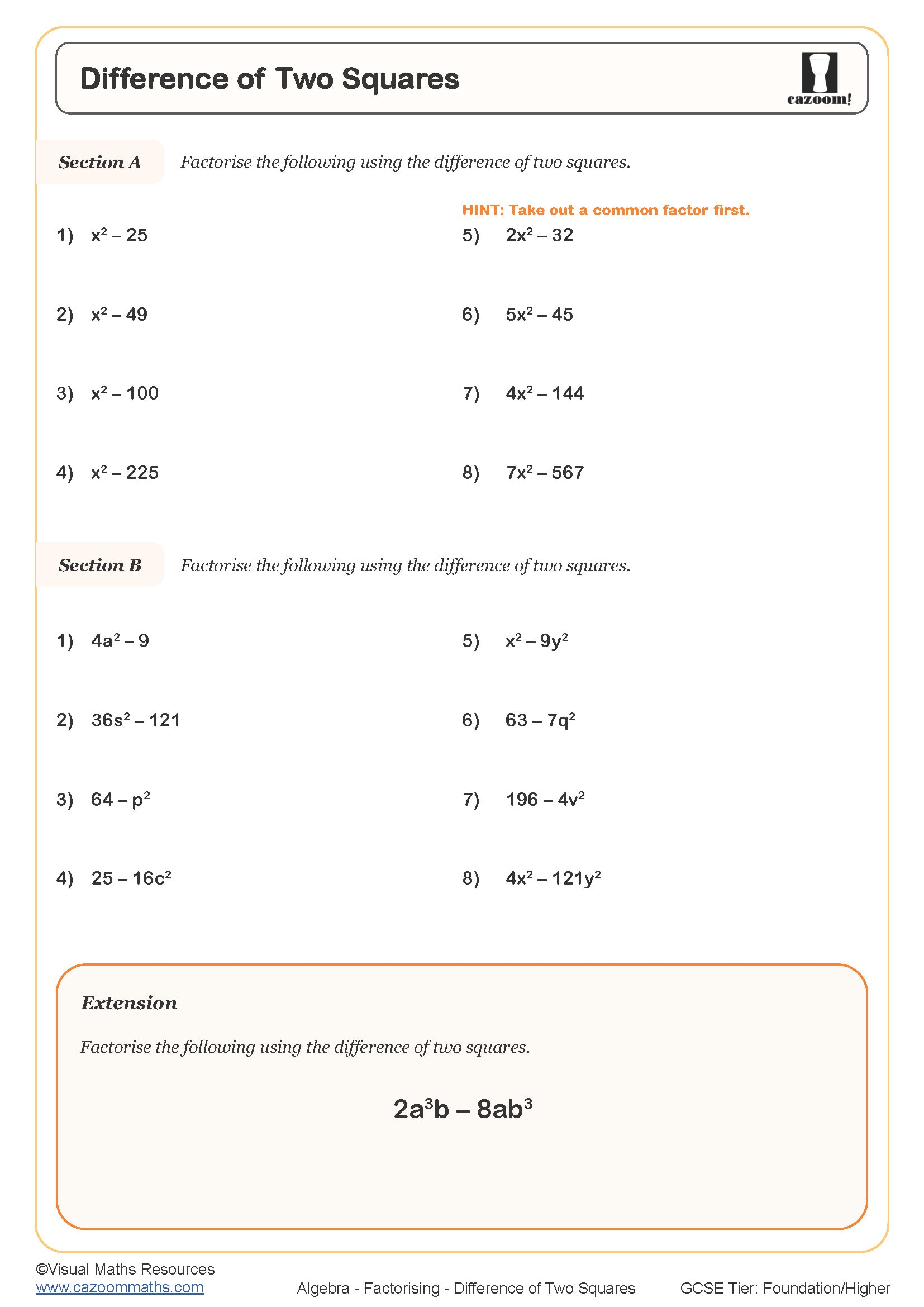
Expanding and Factorising Mixed Exercise
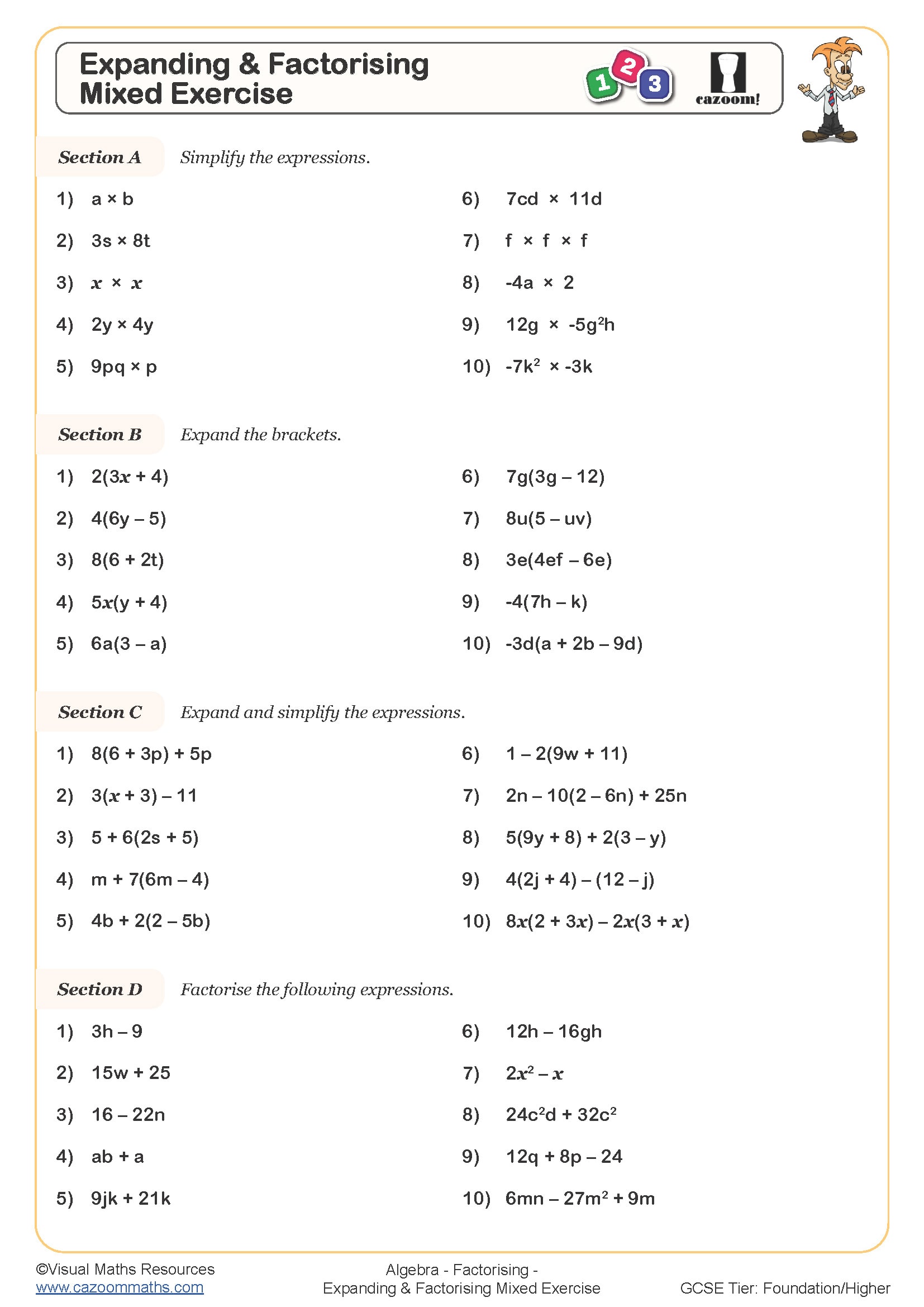
Factorising Expressions
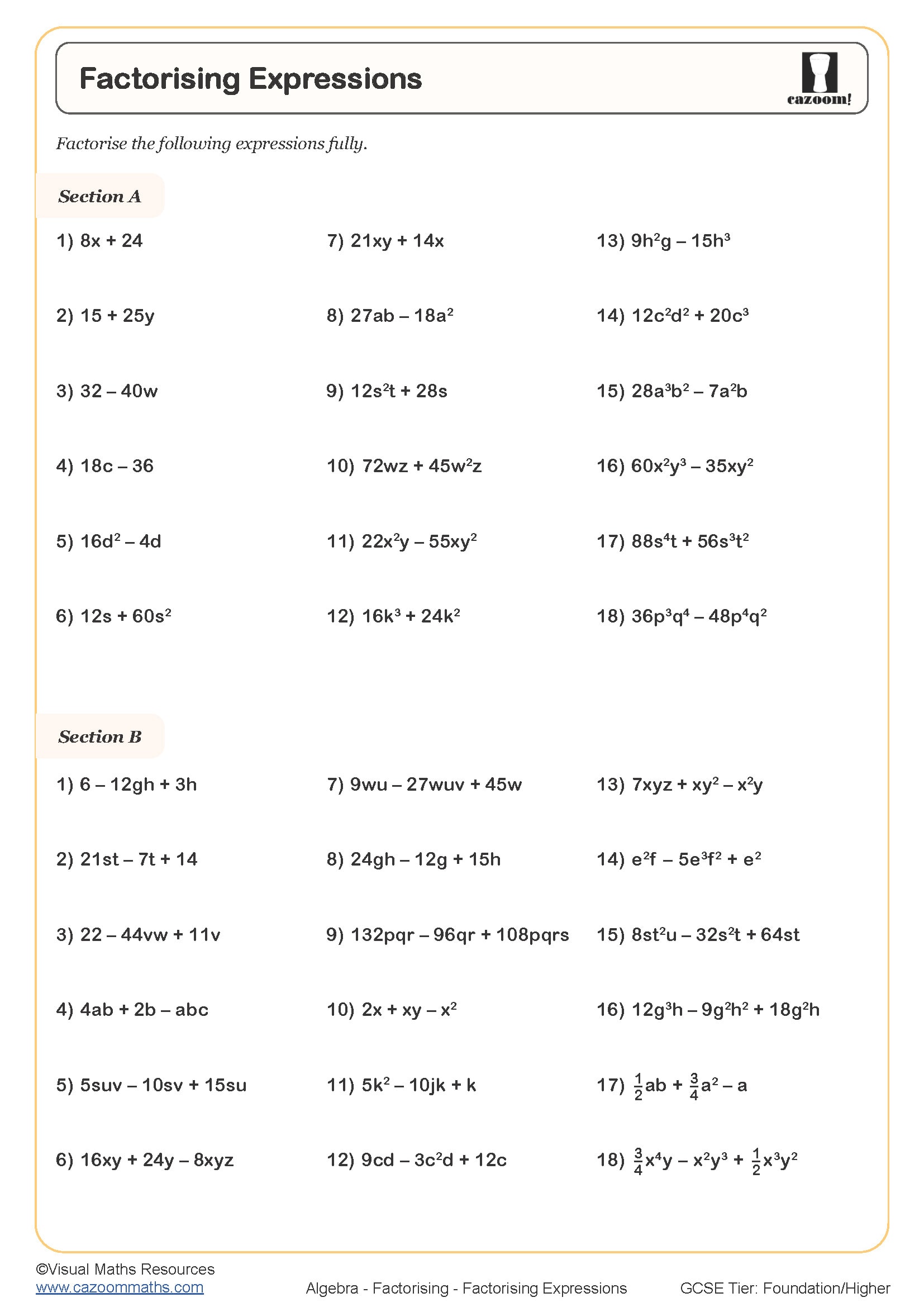
Factorising Quadratic Expressions - Splitting Down the Middle
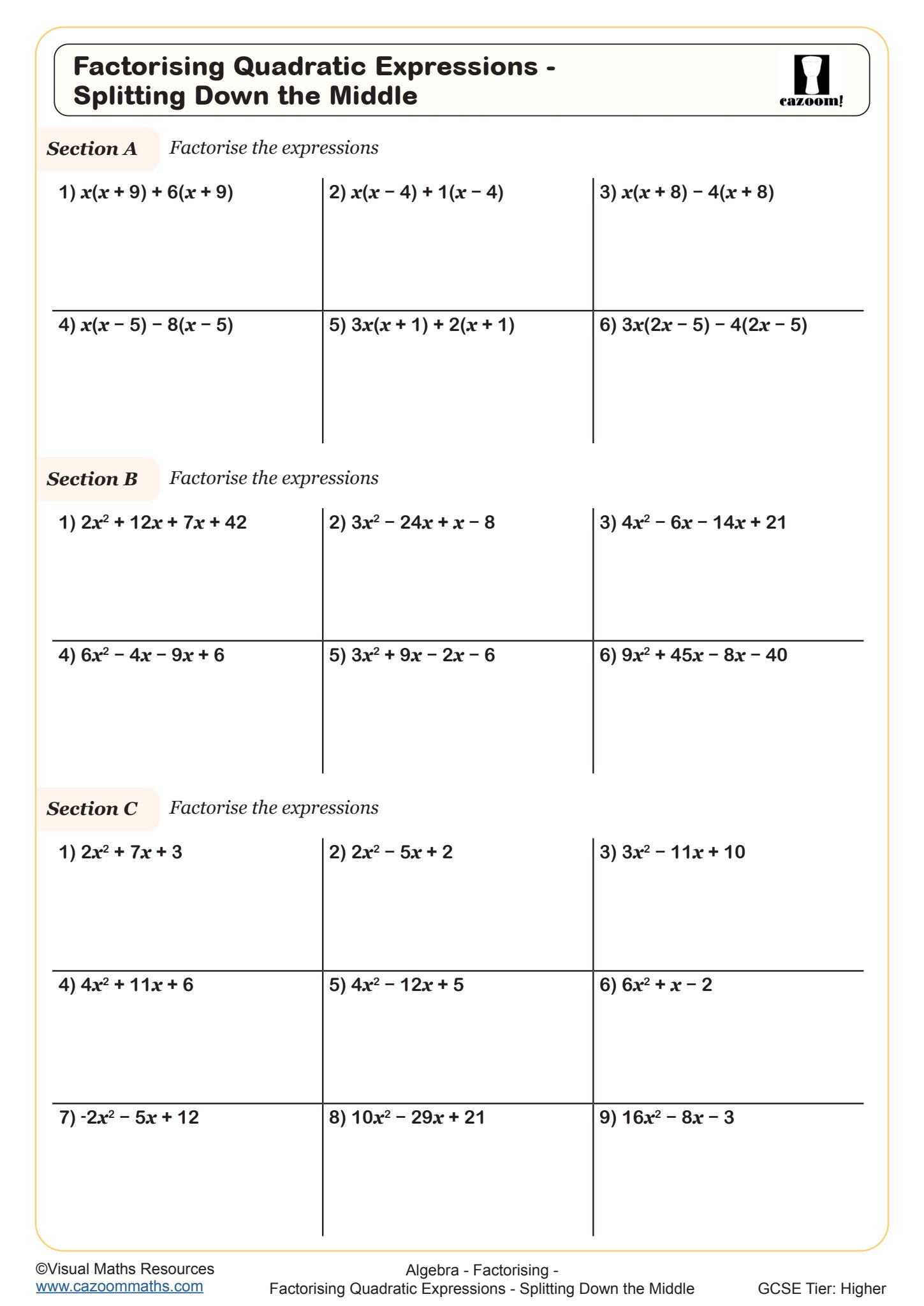
Factorising Quadratic Expressions - Using the Area Model (A)
-Questions-1.jpg)
Factorising Quadratic Expressions - Using the Area Model (B)
-Worksheet.jpg?w=3840)
Factorising Quadratic Expressions (A)
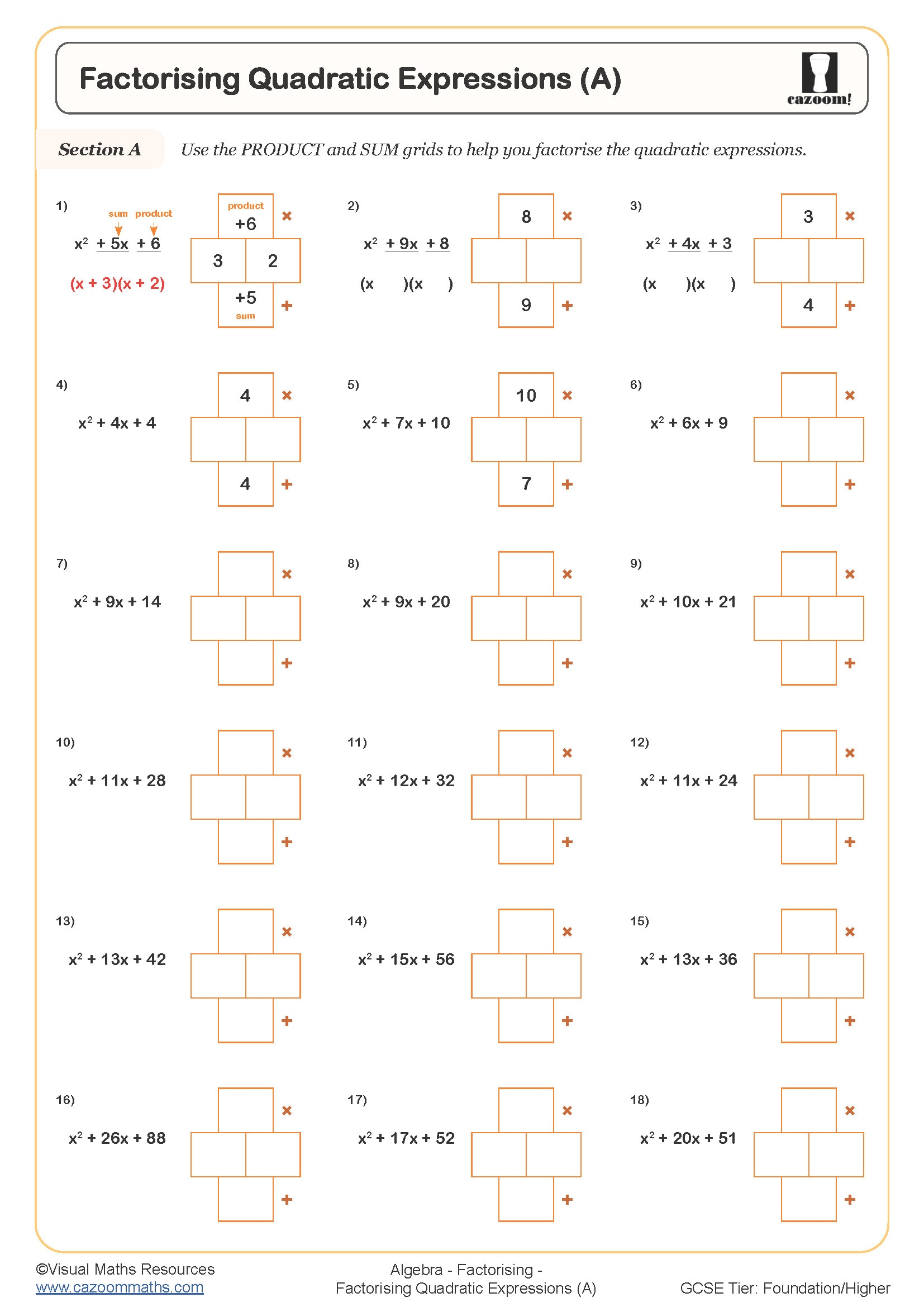
Factorising Quadratic Expressions (B)
.jpg)
Factorising Quadratic Expressions (C)
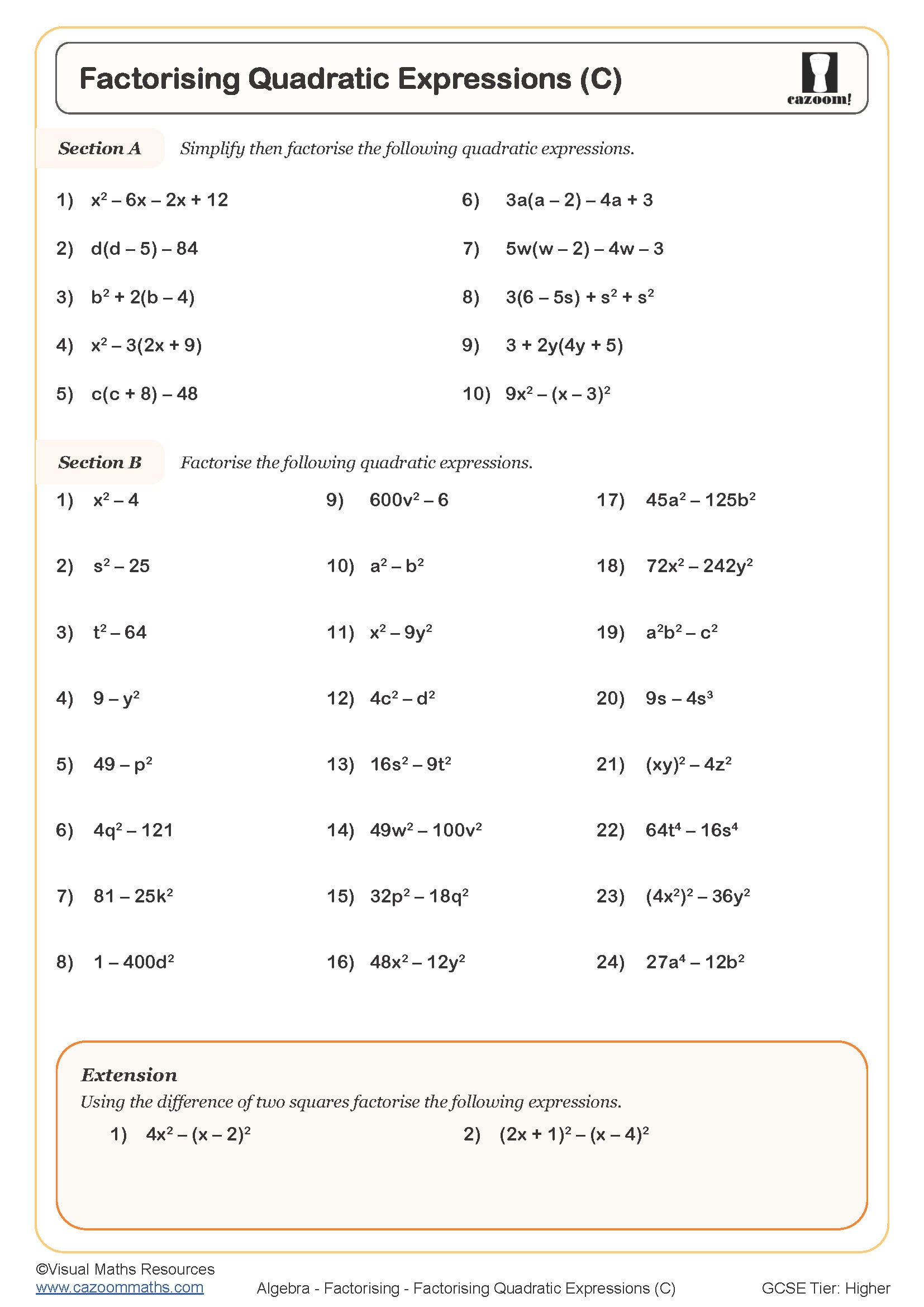
Introducing Factorisation
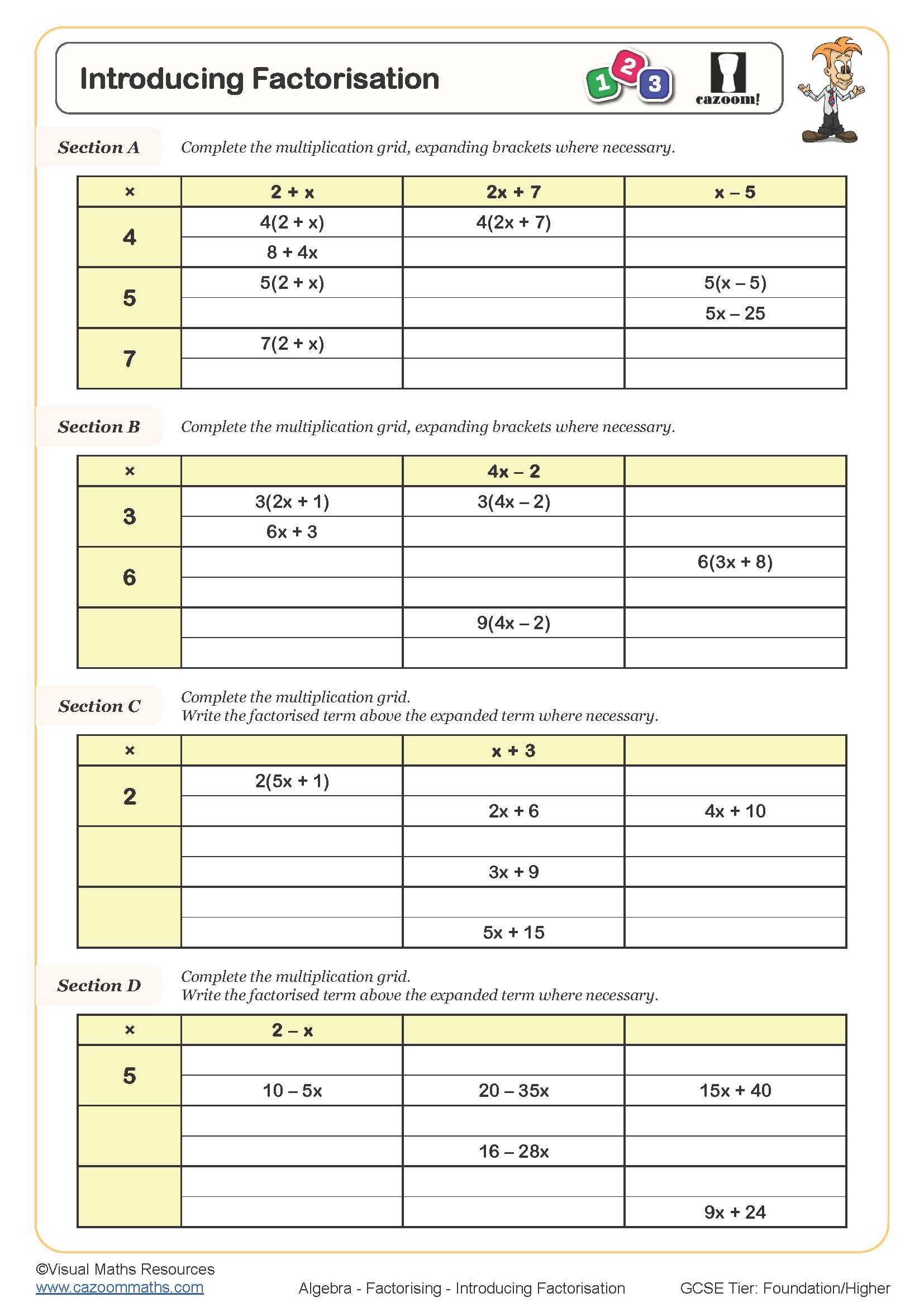
Download Ready-Made PDF Worksheets Right Now
You can download these worksheets in seconds. Each one comes as a PDF file that prints perfectly every time. We include full answer sheets separately too - no more spending hours marking! Your students can check their own work. Teachers love this because it saves masses of time.
Everything Your Year 10s Need to Know About Factorising
These worksheets cover every factorising topic on the GCSE syllabus:
• Taking out common factors - the easy stuff first
• Factorising x² + bx + c - the standard quadratics
• Harder quadratics ax² + bx + c - for the keen students
• Difference of two squares - once you know the trick, it's dead easy
• Factorising in pairs - grouping terms together
• Perfect squares - spotting the patterns
Each worksheet starts simple and gets harder. Students build confidence as they go.
Why Bother Teaching Factorising?
Here's the truth - factorising shows up everywhere in GCSE maths. Students who master it early do much better in their exams. It's not just about getting marks either. Factorising teaches logical thinking. Students learn to spot patterns and break down complex problems.
Many students find algebra scary at first. Good factorising practice changes that. They start seeing algebra as a puzzle to solve rather than something impossible.
Where Students Actually Use These Skills
Your students might wonder when they'll ever need factorising. Here are some real examples:
• Engineers use it to design bridges and buildings
• Game developers need it for graphics and physics
• Shop managers use it for working out profits and costs
• Scientists solve equations in labs every day
• Builders calculate materials and measurements
Show students these examples. They'll pay more attention when they see factorising matters.